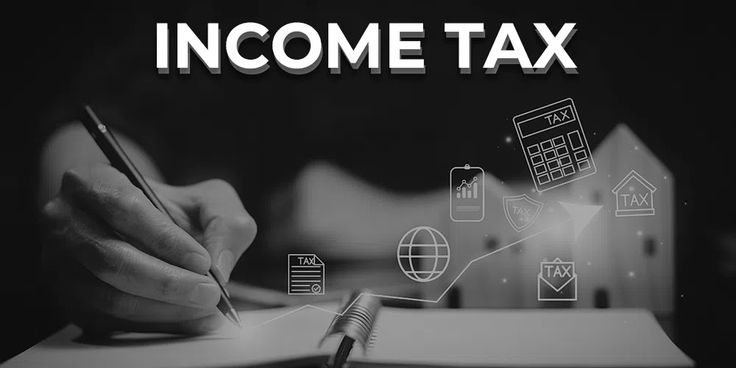
PF Return Filing
Provident Fund (PF) Return Filing involves the process of submitting details related to employees' and employers' PF contributions to the Employees' Provident Fund Organization (EPFO).
PF Return Filing
Effortless PF return filing online with Saink Taxonomy
Our experts handle the entire PF return filing process, ensuring accuracy and adherence to EPFO regulations.
We guide you on collecting the necessary documents like Form 16, KYC details, and salary breakups.
Your financial data is handled securely and confidentially.
We ensure timely filing to avoid penalties and complications with your PF account.
Choose Saink Taxonomy to file your PF returns confidently.
Get Free Consultation
PF Return Filing: Streamlining Your Compliance Obligations
PF Return Filing is a vital legal task for companies in India, ensuring respect for the Employees' Provident Fund Organization (EPFO) rules. This process includes making annual records that explain the payments made by both the company and workers towards the Provident Fund (PF) account. By filing these forms, businesses meet their legal responsibility to report and keep correct records of PF payments, protecting the financial security and retirement benefits of their workforce.
Filing PF reports is important for having openness, compliance, and duty within businesses. It not only shows a commitment to employee safety and social security but also helps in avoiding fines and legal problems that may come from non-compliance. By properly writing and sending PF reports to the EPFO, companies add to the long-term financial stability of their workers and support the integrity of the Provident Fund system, ensuring that employees' savings are safe and available when required.
Eligibility Criteria for PF Return Filing
Mandatory Registration Requirement:
Workers' Provident Fund Organisation (EPFO) registration and monthly PF data reporting were required of employers in India employing 20 or more individuals. This regulatory guideline ensures complete compliance across different sectors and applies to a variety of organizations, including personal firms, public sector enterprises, and non-profit agencies.
Monthly and Quarterly Filing Obligations:
Private establishments are expected to file PF returns monthly within 15 days of the end of the month, while government institutions need to report quarterly by the remaining day of the month following the quarter. The procedure of reporting is online via the EPFO's web page, supplying truth, openness, and speed in the access process.
Penalties for Late Filing and Error Correction:
Late filing of PF returns incurs a penalty of 10% per month, in addition to interest on delayed payments. Errors found post-submission must be fixed within 60 days of the month's end to keep accurate records and compliance. At the end of each financial year, a joint account of all PF contributions made during the year must be given to the EPFO, giving a full picture of yearly payments.
Documents Required for PF Return Filing
To file PF returns properly and quickly, managers must gather a full set of papers. These include:
1.Employees' Provident Funds and Miscellaneous Provisions Act: 1952, is verified by a valid PF registration certificate. Starting the PF return filing procedure and demonstrating the company's dedication to social security and employee welfare depend on this document.
2.Challan Copies: Employers must keep copies of the challans or payment records for the full financial year, showing the PF contributions made by both the boss and workers. These challan copies serve as proof of quick payments and help in balancing the PF account records.
3.Salary Registers or Payslips: Accurate and up-to-date salary records or payslips are crucial for calculating the PF payouts based on the workers' income. These papers provide a clear record of the pay components and help in ensuring that the proper PF payments are made.
4.Employee PF Account Statements: Employers should receive the PF account statements for each employee, which provide a full record of the payments made and the interest received on the PF amount. These papers help in checking the truth of the PF contributions and serve as a reference for any mistakes or differences.
5.Form 3A: In specific cases, businesses may be needed to file Form 3A, which is a monthly payment account showing the amounts made by both the company and workers towards the workers' Provident Fund and Employees' Pension Scheme.
Checklist for PF Return Filing
Before starting the PF return filing process, it is crucial to ensure that you have finished the necessary beginning steps to ensure an easy and efficient filling experience. This plan works as a guide to help you handle the process effectively:
- Ensure that your business is listed with the Employees' Provident Fund Organization (EPFO) and has gotten a PF code. This registration is needed for all companies with 20 or more workers and serves as the base for making PF refunds.
- Maintain correct and up-to-date records of employee contributions and business payouts. These records should include details such as the amount given, the date of payment, and the related employee information. Accurate record-keeping is important for calculating the interest on PF funds and making the necessary forms.
- Calculate the return on PF funds as per the recommended rates set by the EPFO. This figure ensures that workers receive the right amount of interest on their PF payments, in line with the rules.
- Prepare the necessary forms and papers needed for making PF returns. These may include Form 2 (statement and suggestion), Form 5 (details of newly registered employees), Form 10 (details of employees who have stopped to be members), and Form 3A (monthly payment information).
Process of PF Return Filing
The method of PF return filing includes a series of steps to ensure correct and quick reporting of the necessary information to the Employees' Provident Fund Organization (EPFO). Here's a full outline of the steps involved:
1. Gathering the Required Documents and Information:
- Obtain the PF registration card for your business.
- Collect challan copies for the financial year, which serve as proof of PF payouts.
- Gather salary records or payslips to check employee information and payment amounts.
- Acquire staff PF account information for reference.
- If possible, prepare Form 3A, which explains monthly PF payouts.
2. Calculating the PF payments and Interest:
- Determine the total PF payments made by both the company and workers.
- Calculate the interest made on PF funds based on the rates set by the EPFO.
- Ensure that the payments and interest amounts are right and in line with the laws.
3. Preparing the Necessary Forms and Returns:
- Fill out Form 5 for adding new workers and changing current employee information.
- Complete Form 10 for workers who have stopped to be part of the PF plan.
- If necessary, send Form 12A for registering the business under the EPF plan.
- Prepare Form 3A, which gives weekly salary information for each employee.
- Fill out Form 6A, a joint yearly payment account for all workers.
4. Submitting the Returns to the EPFO within the Due Date:
- Private companies must file PF returns monthly by the 15th of the following month.
- Government companies follow a quarterly filing plan, with reports due by the last day of the month following the quarter.
- Submit the forms online through the EPFO's online tool to ensure truth and openness.
5.Obtaining the recognition Receipt:
- Upon successful submission of the PF forms, the EPFO will provide a recognition receipt.
- This ticket serves as proof of quick filing and can be used for reference in case of any mistakes or arguments.
Advantages of PF Return Filing
Compliance with Legal Mandates:
Filing PF forms in a fast and correct way ensures agreement with the Employees' Provident Funds and Miscellaneous Provisions Act, 1952. This law rule demands the filing of PF forms by all companies with 20 or more workers. By sticking to this rule, companies can escape fines and possible legal problems that may come from non-compliance.
Positive Employee Relations:
Accurate and quick PF return filing helps keep a good relationship with workers by showing the organization's commitment to their financial well-being and social security. When workers see that their PF funds are being properly handled and recorded, it creates a sense of trust and respect towards the company.
Employee Welfare and Social Security:
PF return filing acts as a way for groups to showcase their dedication to worker welfare and social responsibility. By making sure that PF payments are made fast and correctly, corporations add to the long-time period economic security of their team of workers, which may have a high-quality impact on employee happiness, performance, and retention.
Additional Benefits:
Filing PF reports also offers other perks to workers, such as insurance coverage through the Employee Deposit Linked Insurance plan, where the company adds 5% of the monthly basic pay as payment for life insurance. Additionally, PF payments are available for tax benefits, with the employer's contribution being free from tax and the employee's input being charged but qualified for decrease under Section 80C of the Income Tax Act.
Why Choose Saink Taxonomy for PF Return Filing?
Saink Taxonomy is a known name in the area of compliance services, giving reliable and quick PF return filing solutions. Our team of experts has extensive experience in handling PF return filling for clients across different businesses. We pride ourselves on our attention to detail, ensuring that your taxes are made properly and on time, every time. This attention to detail is crucial in escaping fines and legal problems that may come from non-compliance or wrong filing.
By pickingSaink Taxonomy for your PF return filing needs, you can rest assured that your compliance responsibilities are in safe hands. Our team will help you through the entire process, from getting the needed papers to sending the returns to the EPFO within the due date. We understand the worth of quick and correct filing, and our knowledge ensures that you meet the legal requirements without any problem. With Saink Taxonomy, you can focus on your core business tasks while we handle the safety parts on your behalf.
Frequently Asked Questions



